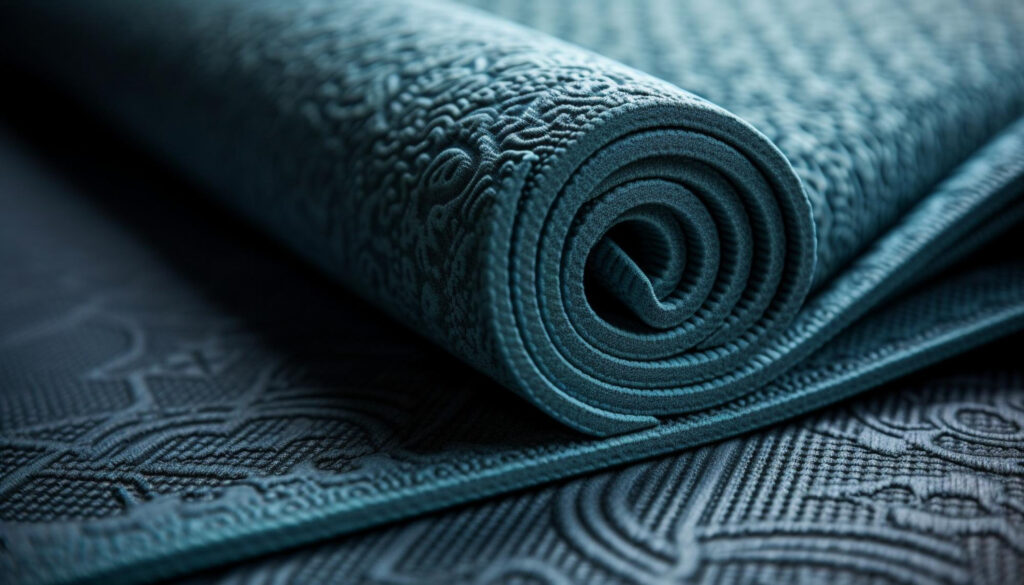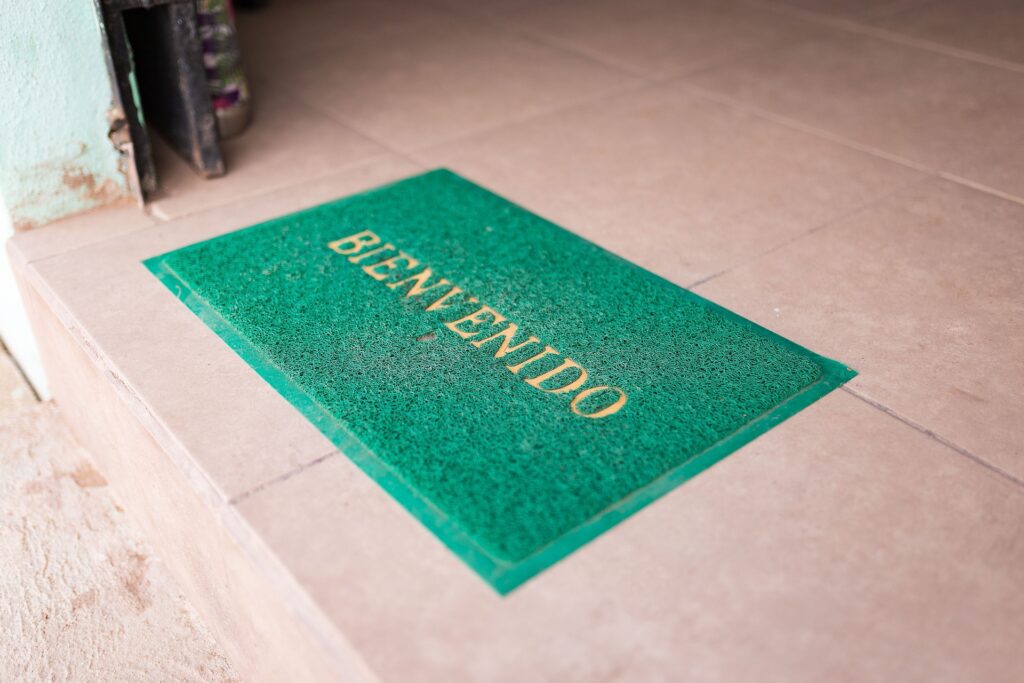The first thing guests see when entering your home is your doormat. Have you ever considered what the best materials for doormat is? Doormats aren’t just decorative items; they’re functional elements that can make a big difference in your home’s cleanliness, durability, and style. This guide will guide you through the best material for doormats and help you choose the best one for your home.
Each material has its unique qualities and characteristics, whether it’s the rough texture of coir, the durability of rubber, or the softness of fabric. We’ll look at the pros and cons of each doormat material so you can pick the one that’s perfect for you. Let’s get started.
Best Materials for Doormat
The following are the best material for doormat that you should be aware of.
1. Coir Doormats

Coir doormats have been a popular choice for homeowners seeking a durable and natural look at their doorstep. Coir is made from coconut husks and offers several advantages that make it a strong contender for the best material for doormats.
Benefits of Coir Doormats
- Durability: Coir doormats are built to last. They can withstand heavy foot traffic and are resistant to wear and tear.
- Natural Aesthetics: The rustic appearance of coir complements various home styles, providing an earthy, welcoming touch.
- Effective Dirt Removal: Coir’s coarse texture makes it excellent at scraping dirt and debris from shoes, helping keep your interiors cleaner.
Drawbacks of Coir Doormats
- Moisture Retention: Coir can absorb moisture, which may lead to mold or mildew if not properly maintained. It’s not the best choice for highly wet environments.
- Shedding: Coir mats can shed fibers, which might need occasional cleaning.
2. Rubber Doormats

Rubber doormats are another popular choice for those seeking durability and functionality in their entryway. They have a lot to offer and are often considered one of the best materials for doormats.
Benefits of Rubber Doormats
- Durability: Rubber doormats are exceptionally durable and can withstand heavy foot traffic and the harshest weather conditions.
- Weather Resistance: These mats are resistant to moisture, making them an ideal choice for rainy or snowy climates. They won’t succumb to mold or mildew.
- Easy Maintenance: Cleaning rubber doormats is a breeze. You can simply hose them down or wipe them clean, and they’ll look as good as new.
- Slip Resistance: Rubber mats typically have excellent traction, reducing the risk of slip and fall accidents.
Drawbacks of Rubber Doormats
- Weight: Rubber mats can be heavy, making them less suitable for smaller, lightweight doors that may not support the weight.
- Aesthetics: While rubber mats are practical, some homeowners may find them less appealing than natural or decorative materials like coir or fabric.
3. Fabric Doormats

Fabric doormats offer a softer and more decorative approach to entryway design. While they may not have the same level of durability as coir or rubber, they have their own unique advantages, making them a contender for the best material for doormat in certain situations.
Benefits of Fabric Doormats
- Softness: Fabric doormats provide a gentle and comfortable surface for your feet, making them an inviting choice for indoor entryways.
- Versatility: These mats come in a wide range of colors and designs, allowing for greater customization and style coordination with your home’s interior.
- Decorative Appeal: Fabric doormats can add a touch of elegance and warmth to your entryway, creating a welcoming atmosphere.
Drawbacks of Fabric Doormats
- Durability: Fabric doormats are less durable than coir or rubber, and they may need to stand up well to heavy foot traffic or harsh outdoor conditions.
- Moisture Retention: They tend to absorb moisture, which can lead to mold or mildew issues if not adequately maintained.
4. Synthetic Materials for Doormats

Synthetic materials have gained popularity as doormat choices due to their durability and versatility. These materials, including polypropylene and nylon, offer a range of benefits that can make them a strong candidate for the best material for doormat in many situations.
Benefits of Synthetic Doormats
- Durability: Synthetic mats are designed to withstand heavy foot traffic and harsh weather conditions, making them a long-lasting option.
- Moisture Resistance: They are often resistant to moisture, which prevents mold, mildew, and rot, making them ideal for outdoor use.
- Customization: Synthetic mats come in various colors and patterns, offering versatility in design to match your home’s aesthetic.
Drawbacks of Synthetic Doormats
- Less Eco-Friendly: Natural options like coir or jute are more environmentally friendly. Synthetic materials are more environmentally friendly.
- Potential for Fading: In direct sunlight, some synthetic mats may fade over time.
5. Natural Fiber Doormats
Natural fiber doormats, including jute, sisal, and seagrass, are celebrated for their eco-friendliness and distinct aesthetic appeal. These materials offer unique qualities that make them contenders for the best material for doormat in specific settings.
Benefits of Natural Fiber Doormats
- Eco-Friendly: Natural fiber mats are biodegradable and made from renewable resources, making them an environmentally conscious choice.
- Aesthetic Appeal: Their natural, earthy textures and neutral colors lend a rustic and welcoming ambiance to your entryway.
- Versatility: Natural fiber doormats work well in both indoor and covered outdoor settings.
Drawbacks of Natural Fiber Doormats
- Sensitivity to Moisture: While many natural fiber mats are moisture-resistant to a degree, they may not fare well in extremely wet or humid conditions.
- Less Durable: Natural fibers may not be as durable as synthetic options and can show wear more quickly.
How to Choose the Right Material for Your Doormat
After exploring the different materials commonly used for doormats, let’s take a look at how to choose the best material for your doormat.
Consider Weather Conditions
- For rainy or snowy areas, rubber and synthetic materials provide excellent moisture resistance.
- For milder climates or covered entryways, natural fibers and fabric doormats can add a welcoming touch.
Assess Foot Traffic
- High-traffic areas require durable materials like rubber or synthetic options.
- In less busy locations, you have more flexibility to choose based on aesthetics and comfort.
Aesthetics and Style
- Coir and natural fiber doormats offer a charming, rustic look.
- Rubber and synthetic mats provide versatile design options.
- Fabric doormats cater to those seeking a more personalized or decorative entryway.
Maintenance Preferences
Indoor vs. Outdoor
- For indoor settings, fabric and some natural fibers offer comfort and style.
- Outdoor areas benefit from the durability and weather resistance of rubber, synthetic, or coir doormats.
Read More: Standard Doormat Size
The Takeaway
The suitable doormat material requires evaluating various options, each with its advantages and disadvantages. Whether you’re looking for durability, eco-friendliness, aesthetics, or low maintenance, there’s a doormat material for you. Consider weather conditions, foot traffic, style preferences, and indoor/outdoor placement when choosing.
Besides being functional, your doormat creates the first impression of your home. The suitable material can enhance your entryway’s welcoming character while also meeting your practical needs.




